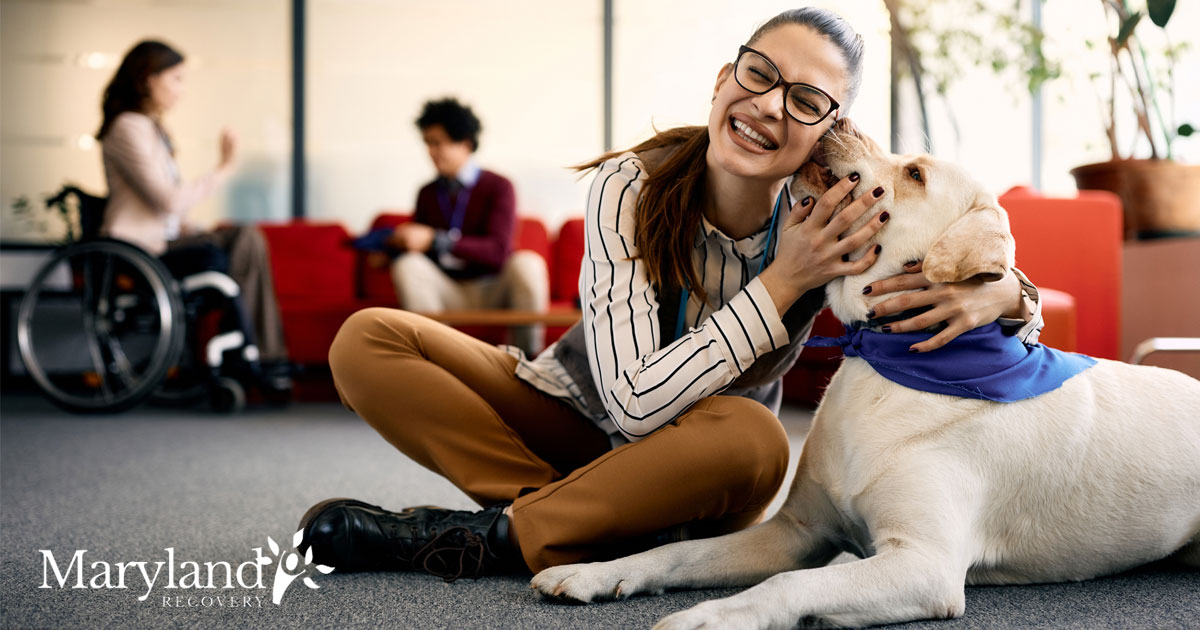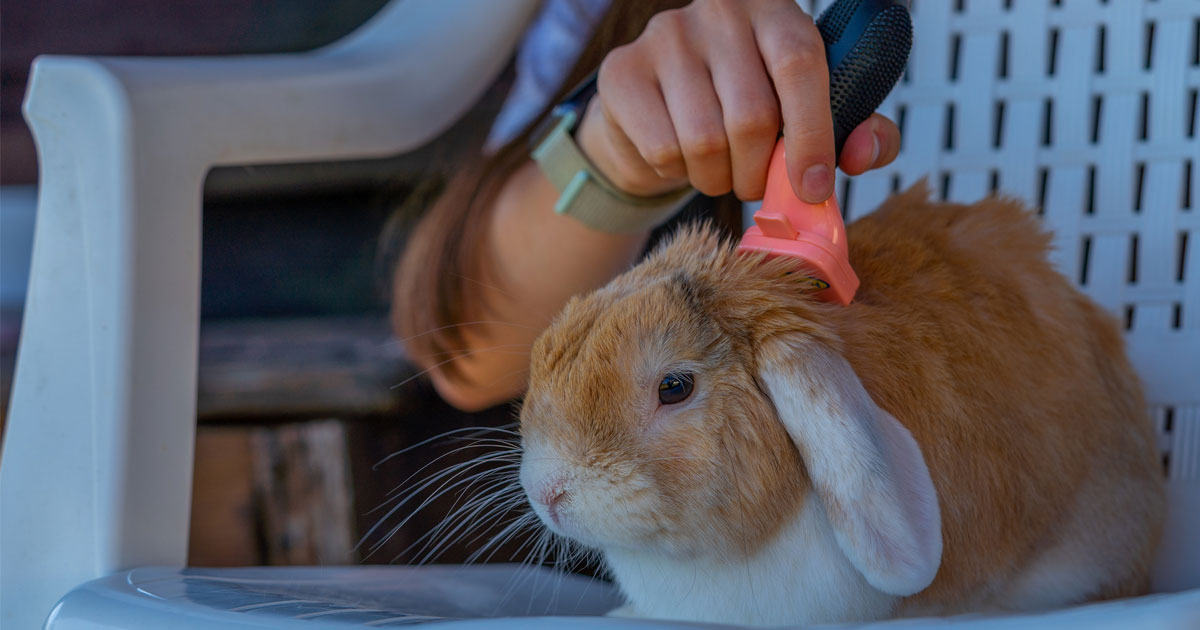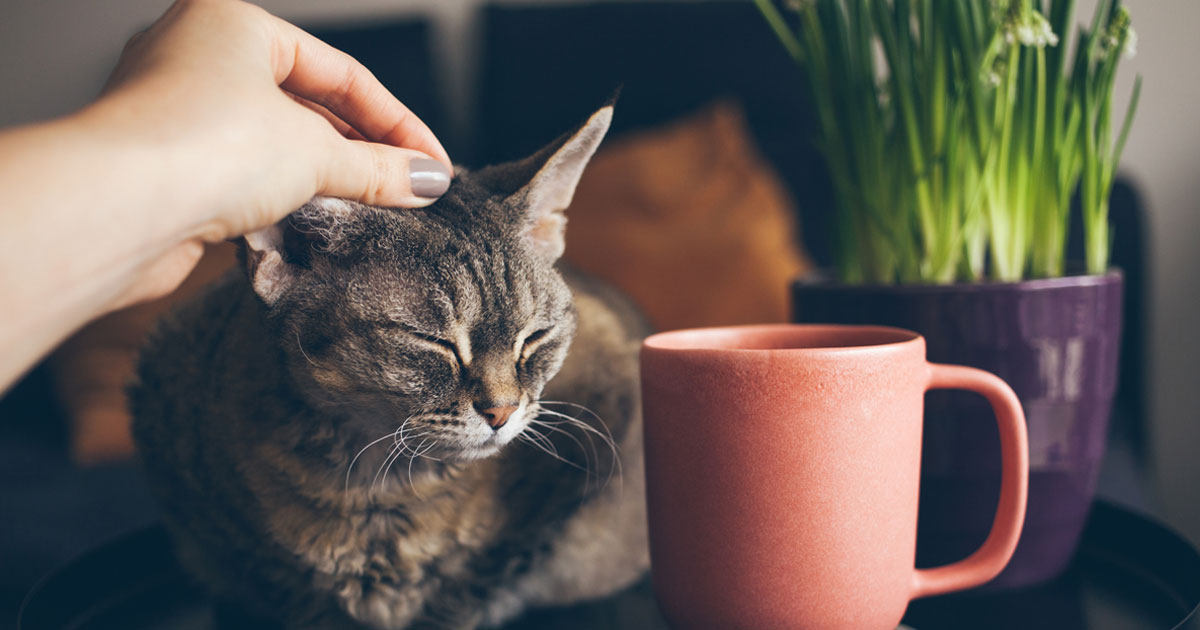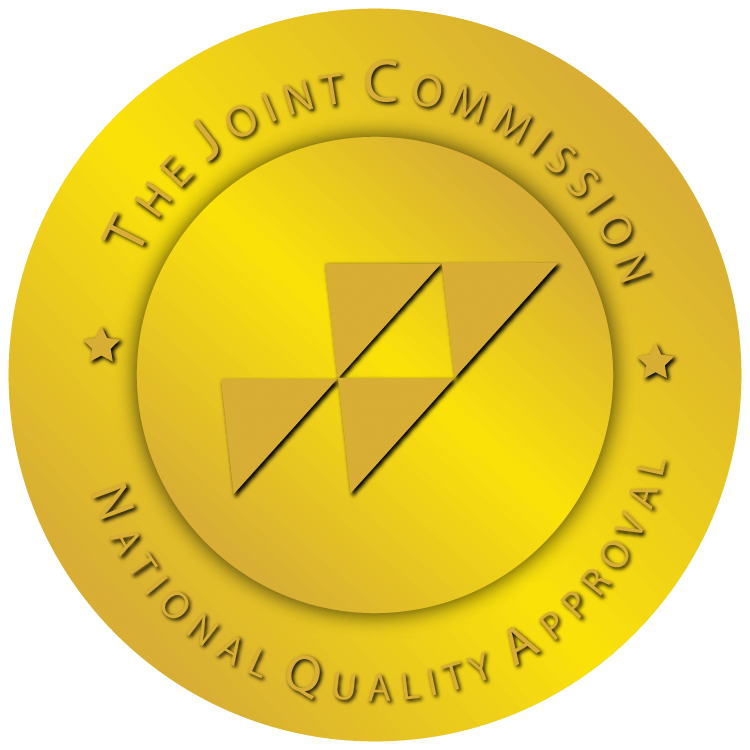
It’s no wonder animal-assisted therapy has become a staple to help clients who are overcoming SUD, as the joy of spending time with an animal can bring considerable comfort over the course of rehabilitation. Overcoming a substance use disorder (SUD) can be a trying journey filled with frustrating days. And while incredibly important to your recovery, sometimes helpful treatments like cognitive behavioral therapy (CBT), group therapy, and even meditation can be tiring even though they are effective.
However, it’s important to note that the value of animal-assisted therapy isn’t just about the perceived comfort that comes from spending time with a pet or other animal. There are research-backed ways professional animal-assisted therapy works to directly treat substance use disorder, as well.
That’s why Maryland Recovery provides clients with expert animal-assisted therapy catered to each individual’s specific needs. From pet therapy and animal companion assistance to programs like animal husbandry, Maryland Recovery can offer animal-assisted therapy solutions that can play a vital role in your road to recovery. Learn more about how these solutions work to address SUD.
How Does Animal-Assisted Treat Substance Use Disorders?
After service animals became a staple in a variety of physical health initiatives, the introduction of animals for mental health and therapeutic roles has become more widespread, as well. Interaction with animals, experts found, could be valuable for such wide-ranging issues as stress and anxiety to PTSD, Alzheimer’s disease, autism, stroke, and more. As a result, animal-assisted therapy (AAT) has undergone numerous studies tracing the impressive impact that animals and animal-related therapies can have on the improvement of neurological and mental health conditions.
One of the ways AAT has been shown to improve client health is via its ability to aid in the treatment of substance use disorders. Applications for animal-assisted therapy are diverse, and many subsets of AAT have been used to treat the various symptoms of SUD, its underlying conditions, and its effects on the brain and body.
Pet Care and Animal Husbandry

Pet care and animal husbandry consists of the client providing food, grooming, exercise, love, and other necessary interactions. It is often used as a means to reduce aggression and depression symptoms in clients. By finding ways to work with an animal and getting to understand their direct needs, clients begin to learn patience, love, and discipline. Animal-assisted therapy has been shown to help clients improve impulse control, relearn skills, and address the cognitive functions associated with providing them. In this way, clients can draw on their relationship with the animal to rewire negative thought processes or addictive triggers that are at the root of a substance use disorder. This is an essential component of CBT.
Animals in Group and Individual Therapy Sessions
AAT is also commonly utilized when a client is undergoing an SUD therapy session. Animals may be incorporated while clients are working in group and individual sessions to help put them at ease. Animals may also bring comfort in the face of harsh withdrawal symptoms. While contact with animals can be beneficial in its own right, animal-assisted therapy is especially effective when paired with residential treatment programs for substance use disorder.
Equine Therapy

Equine therapy is therapeutic contact with horses used to improve physical or mental health conditions. Animal-assisted treatments like equine therapy can also be utilized to hone cognitive skills that may have been injured or weakened due to substance abuse. Equine therapy can specifically assist with reclaiming a client’s balance during riding. Like animal husbandry, pet care, and interacting with therapy animals, equine therapy also provides clients with the ability to engage in positive tasks and distractions as healthy alternatives for the satisfaction they once found in a dangerous substance.
In What Ways Does Animal-Assisted Improve Patient Outcomes?
AAT can improve the chances of a positive outcome in a few ways.
Improvements in the Therapeutic Alliance

Animal-assisted therapy can have a major positive impact on the therapeutic alliance, which is the client and the therapist’s mutual dedication to achieve a satisfactory outcome in therapy. This alliance can be extended to the animals involved in AAT to create a better treatment environment and even reduce anxiety regarding the treatment itself. This puts the client more at ease when undergoing rehabilitation therapies and other treatments meant to help them overcome SUD.
It is important to note that there are certainly other contributing factors that can indicate the quality of a therapeutic alliance between a therapist and the client. Things like differences in backgrounds, personality types, personal beliefs, and general attitudes can vary considerably in both therapist and client. With the addition of animal-assisted therapy as a component of the recovery process, the two will improve their ability to communicate. The animal can present a direct conversational starting point that is a source of positivity and something for both parties to talk about to warm up to other topics.
In addition to being a catalyst for therapy conversation, having an animal present can also increase a client’s trust in their therapist. Clients may be willing to talk with more ease or about more sensitive topics that they otherwise might be concerned about sharing. By tackling deeper topics more quickly, therapists will be better equipped to treat a substance use disorder at its source.
Improving Program Adherence
The therapeutic alliance directly correlates to how well the client and therapist interact on an interpersonal level and impact the buy-in the client has when undergoing therapy treatments. The addition of a therapy animal or another form of AAT to this scenario can help significantly improve the attitude of the client when undergoing other therapy processes and increase the likelihood that the client will not only enter recovery but also maintain sobriety after treatment has been completed. For example, studies demonstrated that clients with anxiety or general negativity and discomfort are significantly less likely to relapse when animal-assisted therapy is part of their recovery process because often, anxiety or negative feelings were key reasons a client turned to substances in the first place.
The same studies examined program adherence in groups of clients who worked through therapy sessions with some added form of animal-assisted therapy as well as groups that did not incorporate animal therapy. In general, using AAT led to a greater number of clients who successfully completed the therapy process. Meanwhile, groups that did not utilize a therapy animal were less likely to finish the program and stay in recovery.
Stress Relief and Reduction in Associated Stress Response

While an animal’s presence alone can reduce anxiety and distress during sessions, AAT can also be helpful in a more general sense. AAT enables clients to engage in comforting actions, such as petting or holding an animal as a source of focused and tangible relief during moments that may be uncomfortable or upsetting. Gentle contact with an animal or carrying out tasks to care for an animal in these moments can mitigate the pain and make processing these emotions much easier. In addition, studies show that even the physiological symptoms of stress, including elevated heart rate, are improved after animal-assisted therapy. This touch comfort is the basis of therapeutic techniques like massage as well as animal-assisted therapy.
Animals Commonly Associated With Animal-Assisted Therapy
While animals of all types can be utilized in AAT, there are a few animals that are particularly fitting for therapeutic purposes. All can provide clients who are hesitant to interact with therapists or peers with an opportunity to push their limits and slowly become more comfortable sharing their emotions with others.
Dogs

It may not come as a surprise that the most common working therapy animals tend to be dogs. Dogs have a unique bond with humans, sharing empathy, patience, and love naturally with friends and strangers alike, making them terrific companions in a therapeutic setting. Because dogs come in all shapes and sizes, it is simple to find a canine companion that works best for an individual client. The most common breeds trained to be therapy dogs are larger breeds with a sweet disposition, such as golden retrievers, Great Pyrenees, and Labradors.
Horses and Other Large Farm Animals
Other commonly utilized animals for AAT are horses and other large farm animals like cattle, goats, and even swine. Though they aren’t likely to be sitting in a therapist’s room during a session, equine-assisted therapy and animal husbandry therapy can be powerful methods to improve mental health when combating substance use disorder. Grooming and physically interacting with farm animals can give clients the ability to focus on maintaining the animal’s needs and provide touch therapy at the same time. This can be a key positive outlet as a means to mitigate cravings and respond in positive ways to stress or anxiety. Horse riding can also be a part of animal therapy, though it does not have to be.
Cats and Smaller Farm Animals
While less common, cats, rabbits, and even chickens are terrific animal-assisted therapy companions. All offer a calming opportunity for petting and cuddling, as well as a chance to take on regular responsibility for another living creature. For those who are hesitant to interact with larger animals, these smaller animals may be just the ticket.
Animal-Assisted Therapy FAQs
These questions about animal-assisted therapy are commonly fielded by our professionals.
Animal-Assisted Therapy Helps Treat Substance Use Disorder
The team at Maryland Recovery understands the vital role animals can have when humans are overcoming substance use disorders and improving their mental health. That’s why our animal-assisted therapy centers on celebrating the comfort that animals can bring. We partner with a local farm to provide equine therapy as well as the opportunity for animal husbandry and other positive interactions with animals.
Together with our other research-backed treatment and therapy options, animal-assisted therapy can help you address the contributing factors to your SUD and find lasting recovery. To learn more, contact us for a free consultation.
Sources:
- https://www.ncbi.nlm.nih.gov/pmc/articles/PMC6477876/
- https://www.ncbi.nlm.nih.gov/pmc/articles/PMC6981395/
- https://pubmed.ncbi.nlm.nih.gov/29882342/
- https://doi.org/10.4137/SART.S40475
- https://ps.psychiatryonline.org/doi/10.1176/appi.ps.202000585
Reviewed by Christopher Schwartfigure MS, LGPC, CAC-AD








